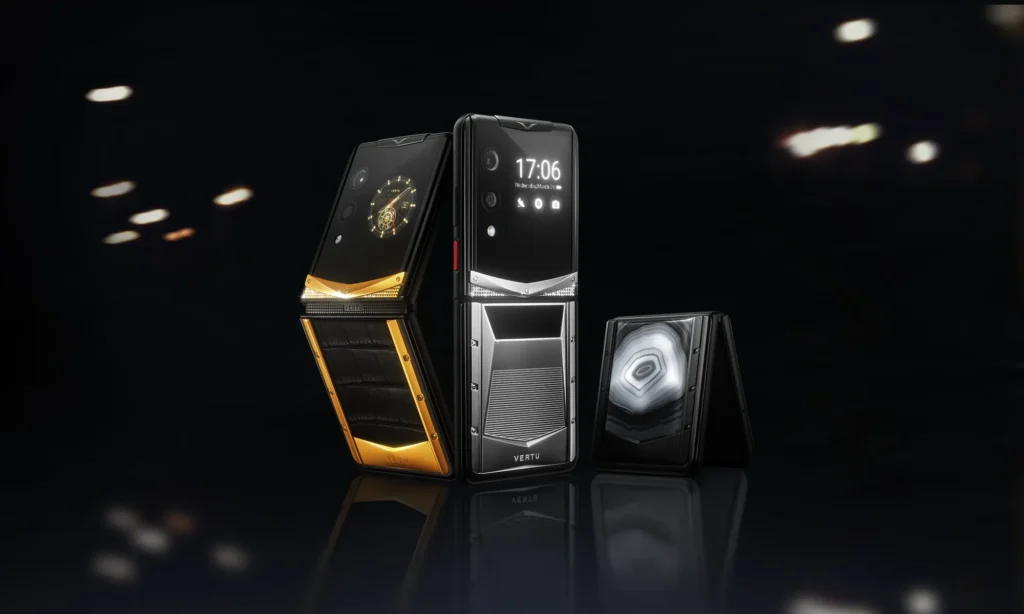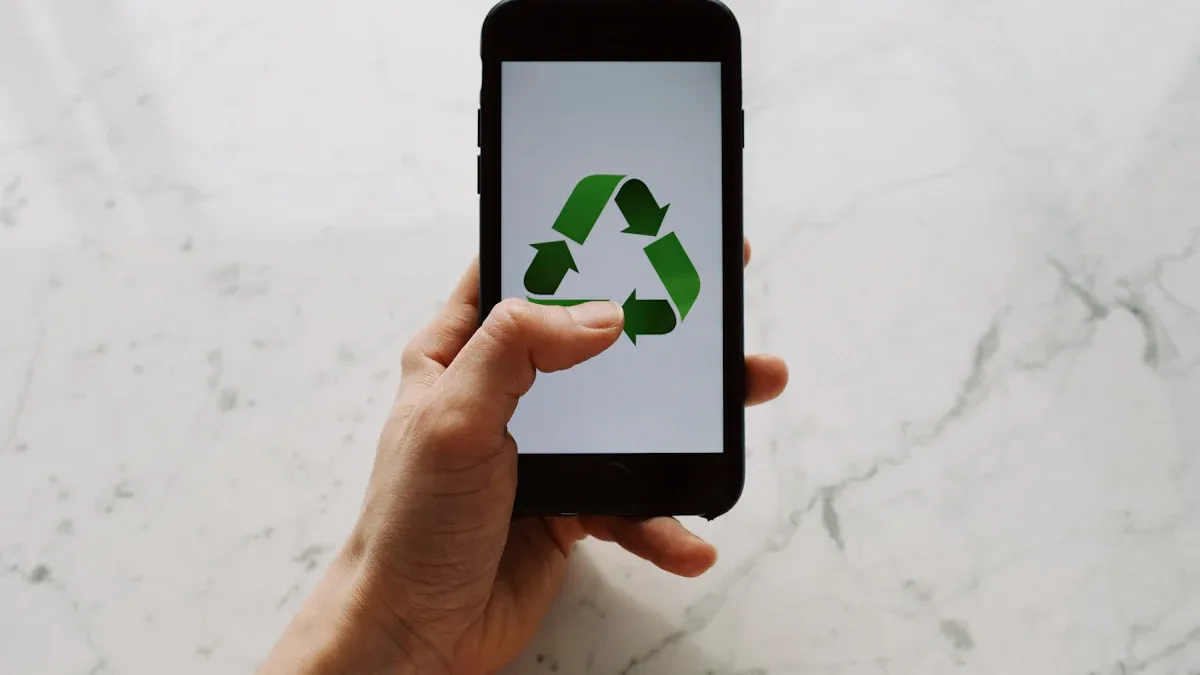
Sustainable luxury smartphones mix cool designs with eco-friendly materials. They use recycled metals, recyclable glass, biodegradable plastics, and green ceramics. These materials cut waste and help the environment while staying strong and stylish. Picking eco-friendly phones helps makers lower their impact on nature. These ideas show you can have great tech and still care for Earth.
Key Takeaways
-
Eco-friendly smartphones use materials like recycled metals, glass, and plastics. These help reduce waste and protect nature.
-
Phones made with recycled aluminum and titanium need fewer new materials. They are stylish and strong.
-
Recyclable glass and new technology make phones last longer. This means fewer replacements and less electronic waste.
-
Plastics from plants or recycled ones are better for the planet. They save resources and cause less pollution when made.
-
Buying from brands that recycle and care for the Earth helps create greener technology for the future.
Recycled Metals in Sustainable Luxury Smartphones
Recycled metals are key in making eco-friendly luxury phones. They cut down waste and still keep the high quality people expect. Common metals used include aluminum, titanium, and rare earth elements. Each metal has special features that help with both performance and sustainability.
Aluminum: Light and Reusable
Aluminum is a favorite for making smartphones because it’s lightweight. This makes phones easy to carry and hold. Aluminum can be recycled over and over without losing quality. This reduces the need to mine new materials, saving natural resources.
|
Property |
الوصف |
|---|---|
|
Lightweight |
Aluminum is light, perfect for portable devices. |
|
Recyclability |
It can be reused endlessly, helping the planet. |
|
Corrosion Resistance |
It resists rust, making it last longer in electronics. |
Aluminum doesn’t rust easily, so it keeps devices strong and looking good. Using recycled aluminum in phones helps make them eco-friendly without losing style or strength.
Titanium: Strong and Green
Titanium is super strong, so it’s great for luxury phones. It doesn’t scratch or dent easily, keeping phones looking new for years. Titanium is also recyclable, which fits well with eco-friendly designs. Though making titanium uses a lot of energy, cleaner methods are now being used to lower its impact.
Choosing a titanium phone means you get a durable device that lasts longer. This means fewer replacements and less electronic waste. Titanium shows how recycled materials can be both fancy and good for the Earth.
Responsible Use of Rare Earth Metals
Rare earth metals like neodymium and tantalum are vital for smartphones. They help parts like speakers, cameras, and batteries work. But mining these metals can harm the environment and raise ethical issues. To fix this, many companies now focus on responsible sourcing. They work with suppliers who follow strict rules to protect workers and nature.
Recycling rare earth metals from old phones also helps reduce mining. By reusing these materials, companies lower their environmental impact and support recycling. This helps the planet and ensures these important resources are available for future technology.
Recyclable Glass for Smartphone Displays

Glass is important for making eco-friendly luxury phone screens. Using recyclable glass helps cut waste while keeping screens strong and clear. New glass technology has created tougher, greener materials that match eco-friendly goals.
Chemically Reinforced Glass: Strong and Eco-Friendly
Chemically reinforced glass is a big improvement for phone screens. It goes through a special process to make it stronger and harder to break. How does this work? The glass is soaked in a chemical bath. Smaller ions are swapped with bigger ones, making the surface tougher.
-
Glass expert Inge Burger tested this glass and found it can handle a lot of bending before breaking. When it does break, it shatters into tiny pieces, spreading out the stress.
-
Modern LABS glass, like SCHOTT's Xensation® α, uses two steps to get even stronger. This makes it better at surviving drops, perfect for fancy phones.
These improvements make phones last longer, so you don’t need to replace them often. This helps reduce electronic waste and fits with eco-friendly ideas.
New Ways to Recycle Glass
Recycling glass for phone screens is tricky, but new methods make it easier. Companies now use advanced ways to recycle glass without losing its quality.
|
Innovation |
الوصف |
|---|---|
|
Glass Composition |
Special glass with nano-ceramic crystals resists scratches and drops. |
|
Processing Temperature |
Some glass can now be recycled at lower heat, saving energy. |
|
Challenges |
Recycling tough glass needs creative solutions due to high heat and corrosion. |
These new ideas keep recycled glass strong and clear, so it works well in eco-friendly luxury phones. By using these methods, companies can make great products while helping the planet.
Recyclable glass shows how smart ideas can protect the Earth without losing quality. When picking your next phone, think about how these changes support a greener world.
Eco-Friendly Plastics in Smartphone Design
Eco-friendly plastics are changing how luxury smartphones are made. These plastics cut waste and replace regular plastics with greener options. Using plant-based and recycled plastics makes phones stylish and better for the planet.
Plant-Based Plastics: A Greener Choice
Plant-based plastics come from plants like corn or sugarcane. They replace oil-based plastics, saving non-renewable resources. Making them also creates less pollution, which helps the environment.
For example, flaxstic is made from flax waste and biopolymers. It produces 30% less carbon emissions than regular plastics. It also uses 34% less water and makes 80% less waste. Here’s why plant-based plastics are helpful:
|
Material Type |
Benefits |
|---|---|
|
Biodegradable Plastics |
Made from plants, cutting down on non-renewable resources. |
|
Flaxstic |
Mix of flax waste and biopolymers, lowering carbon emissions by 30%. |
|
Water Usage |
Needs 34% less water than traditional plastics. |
|
Waste Generation |
Produces 80% less waste during production. |
Choosing plant-based plastics supports eco-friendly goals and renewable materials.
Recycled Plastics: Giving Old Materials New Life
Recycled plastics help reduce waste and save resources. They come from used items like bottles or old gadgets. Reusing these plastics means less need for new materials and less trash in landfills.
In luxury smartphones, recycled plastics are used for parts like casings. This reduces waste and gives old plastics a second chance. Some companies even use ocean-bound plastics to make phone parts.
Picking a phone with recycled plastics helps the Earth. It reduces plastic waste and supports a cleaner, greener future.
The Role of Ceramics in Sustainable Luxury Smartphones
Ceramic Materials: Strong and Eco-Friendly
Ceramics are changing how smartphones are made. Materials like yttria-stabilized zirconia are very strong and tough. They don’t bend or crack easily, making them great for fancy phones. New improvements make ceramics better at handling drops and pressure. This means your phone is less likely to break if it falls.
Ceramics also don’t carry electricity. This helps your phone keep good signal strength with a ceramic case. Unlike metals, ceramics don’t block wireless signals. They are both durable and useful, making them a smart choice for luxury phones.
How Ceramics Help the Environment
Ceramics are not just strong; they are also eco-friendly. They come from natural resources like clay and minerals. This reduces the need for materials that can’t be replaced. Ceramics can also be recycled. Old ceramic parts can be reused to make new products, cutting down on waste.
Making ceramics is now better for the planet. Factories use less energy to create ceramic parts, lowering pollution. Ceramics last a long time, so phones need fewer replacements. This means less electronic trash. Choosing phones with ceramic parts helps the Earth and gives you a high-quality product.
-
Key Benefits of Ceramics:
-
Strong and hard to bend.
-
Better at handling drops and pressure.
-
Don’t block wireless signals.
-
Ceramics show how materials can be both fancy and green. They keep your phone stylish, useful, and good for the planet.
Future Innovations in Sustainable Smartphone Materials
Advances in Recycled Material Technologies
Recycling methods are improving to meet eco-friendly smartphone needs. Phones don’t last long, so better recycling is needed. Governments are making stricter rules, like the EU's WEEE Directive and China's Solid Waste Law. These laws push for more recycling. People are also learning how recycling helps the planet. This has made more people join recycling programs. Money rewards also encourage recycling efforts.
New science is making recycled materials better for phones. For example, CFRTP (Carbon Fiber Reinforced Thermoplastics) has many advantages:
|
Feature |
Benefits |
|---|---|
|
Makes phones lighter, easier to recycle, and simpler to take apart. |
|
|
HyRECM boosts product designs |
Allows new ideas, better user experience, and cheaper repairs. |
|
CFRTP adds strength |
Protects phones, spreads heat, and handles impacts well. |
These upgrades help companies make strong, eco-friendly phones with less waste.
Bioengineered Materials for Eco-Friendly Devices
Bioengineered materials are creating new options for phone-making. Scientists are testing bio-polymers and lab-made replacements for regular materials. These come from renewable sources like algae or farm waste. They break down naturally when no longer used.
For instance, bioengineered plastics are as strong as regular ones but decompose safely. This cuts down on fossil fuel use and reduces waste over time. Picking phones with bioengineered parts helps the planet while giving you advanced technology.
Industry Efforts Toward a Circular Economy
The phone industry is moving toward reusing and recycling products. Companies now design phones with parts that can be replaced easily. This means fewer phones are thrown away, and they last longer.
Some brands collect old phones to recycle into new ones. These programs save resources and reduce waste. Supporting brands that focus on reuse and recycling helps protect the Earth.
Tip: Choose brands that promote recycling and replaceable parts. These companies lead in making eco-friendly luxury smartphones.
Sustainable luxury smartphones show you can have cool tech and care for Earth. They use recycled metals, recyclable glass, biodegradable plastics, and sustainable ceramics to cut waste and save resources.
Did you know? Picking eco-friendly phones helps the planet and reduces pollution.
New ideas and teamwork are making these changes happen. When you choose green phones, you push brands to focus on the environment. Together, we can make better phones that are stylish and eco-friendly. 🌍
التعليمات
What makes a smartphone sustainable?
A sustainable smartphone uses recycled metals, glass, and biodegradable plastics. It is made with eco-friendly methods to save energy and cut waste. These steps protect nature while keeping the phone high-quality.
Are sustainable luxury smartphones durable?
Yes, they are very durable. Strong materials like titanium, tough glass, and ceramics make them last. These parts resist scratches and drops, so they don’t break easily. This means fewer replacements and less electronic trash.
How do eco-friendly production processes benefit the environment?
Eco-friendly production lowers pollution, saves resources, and cuts waste. It uses clean energy and recycled materials to reduce harm to nature. These methods make manufacturing better for the planet.
Can recycled materials match the quality of new ones?
Recycled materials can be just as good as new ones. For example, recycled aluminum stays strong and lightweight. Modern recycling methods ensure these materials meet high standards for luxury phones.
Why should you choose a sustainable smartphone?
Choosing a sustainable phone helps the Earth by reducing waste. It supports brands that care about the planet and green technology. You also get a great phone that matches your values.




